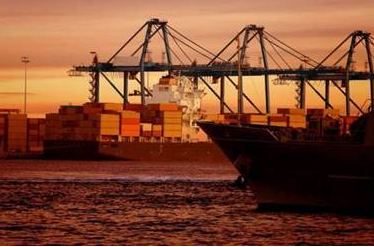
AIR FREIGHT
Often announced since the summer, the overheating of air freight on major East-West trades is starting to be felt.
After several weeks of stability, prices started to rise again at the beginning of September (+6% in week 36, including +18% between China and Europe!): spot rates hit a new high in the first week of the month as the sector prepares for strong transpacific demand in the fourth quarter.
The lasting shift from sea to air freight, driven by geopolitical factors such as the Red Sea crisis, as well as the continuously high demand in e-commerce keeps on pushing capacities to their limits.
This growing demand, especially in the Asian export market, is resulting in higher competition for space and significant volatility in air freight rates.
These challenges are expected to persist and will be exacerbated by the current national Golden Week holiday in China, coming along with business and factory closures, expecting to impact international supply chains.
Capacity constraints are already being felt, with numerous flights fully booked.
The market may experience even greater pressure in the fourth quarter of 2024, due to reduced belly capacity and the strikes at U.S. East Coast ports, which could further intensify current challenges.
In light of the market conditions outlined in this letter, a pronounced peak season is anticipated to manifest itself in the coming weeks.
The combination of high demand and potential capacity shortages may lead to an overheated market towards the end of the year, likely resulting in further price increases.
Due to the limited capacities, it is highly recommended to plan ahead and secure air freight space as early as possible.
SEA FREIGHT
The global container shipping industry saw profits surge to more than $10 billion in the second quarter on record volumes and rising freight rates after Red Sea diversions.
Fortunes in the industry, which transports 80% of global merchandise trade, boomed during the pandemic amid strong consumer demand and Covid-related disruptions to supply chains.
Capacity has tightened as Houthi attacks in the Red Sea force vessels to take longer routes around southern Africa.
That’s helped pushed up spot container rates and contributed to congestion at some major ports.
As of today, the ongoing situation in the Red Sea continues to intensify, impacting maritime shipping significantly.
Ships continue to be diverted around the Cape of Good Hope, leading to increased transit times and operational costs.
Although rates have started to fall a little bit in September, they remain at very high levels.
Seeking to rebalance the market in their favor, companies are starting to increase blank sailings.



BREAKING NEWS
The massive port strike has begun today on the East Coast, threatening shortages and rising prices: nearly 50,000 members of the International Longshoremen’s Association (ILA) are on strike against the nation’s East and Gulf Coast ports, choking off the flow of many of America’s imports and exports in what could become the country’s most disruptive work stoppage in decades.
The U.S. container shipping industry is facing a critical juncture as this labour strike threatens to disrupt operations at East and Gulf Coast ports, coinciding with a significant import surge.
The impact of an ILA strike on container shipping and cargo handling: the ILA is the largest union of maritime workers in the U.S. Its members handle cargo at almost 40 container ports across the East and Gulf Coasts.
The impacts of the strike will be:
- A complete shutdown of loading, unloading, and container handling for more than half of U.S. container volume.
- Significant delays at ports, specifically East Coast and Gulf Coast entry points.
- Major disruptions to cargo already on the water and inbound to affected ports.
- Carriers rerouting vessels to avoid potential delays or disruptions at affected ports.
- Longer cargo transit times and additional costs.
- Ocean carriers placing an embargo on cargo coming from the East Coast.
- If operations are halted, cargo could become stranded at the port, leading to higher charges.
- Increased freight and container fees, including storage, per diem, demurrage, detention, chassis, storage, and pre-pull charges.
- Downstream impact on importers, retailers, and others in the run-up to peak season.
- Increased capacity costs and congestion for international freight.
- Global disruption and economic damage to international supply chains.
As for air freight, a port strike would come at the worst time: in the middle of an intense peak season (read above) and while the winter schedules of passenger flights mechanically reduce the available capacity. Significant delays and a tenfold increase in freight rates are to be expected.


